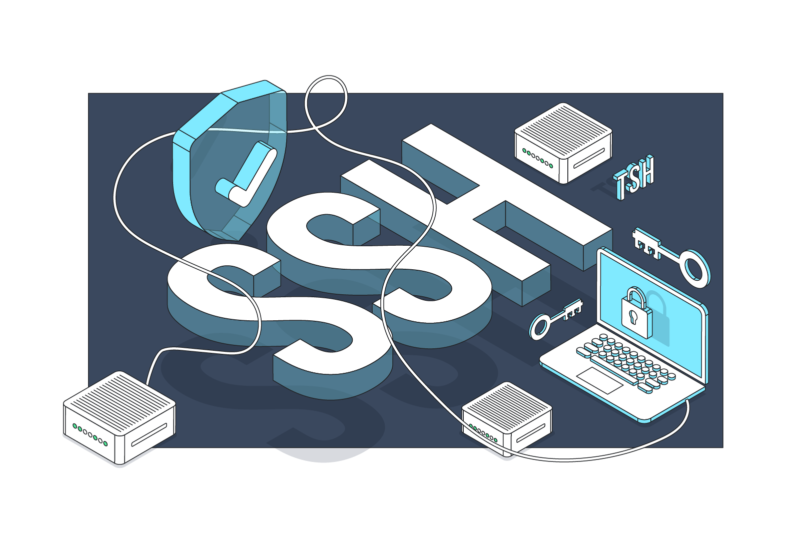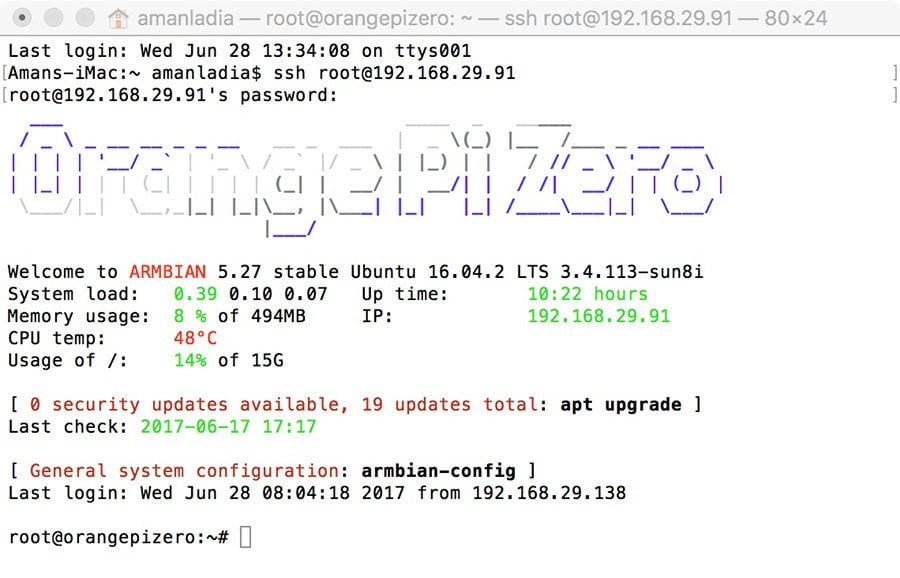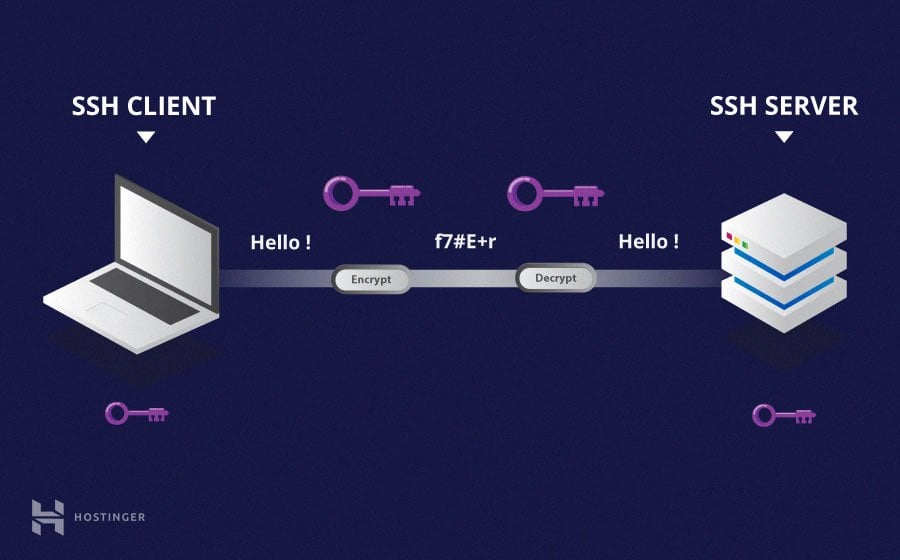Mastering Remote IoT Device SSH Tutorial: Your Ultimate Guide
So, you’ve probably heard the buzz around IoT devices and how they’re revolutionizing the way we interact with technology. But what happens when you need to manage or troubleshoot these devices remotely? Enter SSH – your new best friend in the world of remote IoT device management. Whether you’re a tech enthusiast, a developer, or just someone looking to level up their skills, this remote IoT device SSH tutorial is here to guide you through the process step by step.
Let’s be real for a sec, IoT devices are everywhere these days. From smart thermostats to industrial sensors, they’re making life easier and more efficient. But with great power comes great responsibility, right? Knowing how to securely connect to and manage these devices remotely is crucial. That’s where SSH comes in, offering a secure, encrypted way to interact with your IoT devices no matter where you are.
Now, if you’re new to the world of SSH or just need a refresher, don’t worry. This guide will break it down for you in a way that’s easy to understand, yet packed with valuable insights. By the end of this remote IoT device SSH tutorial, you’ll be equipped with the knowledge to confidently manage your IoT devices from anywhere in the world.
- Charlie Von Pierce The Rising Star Shining Brighter Than Ever
- Heart Emoji Meanings The Ultimate Guide To Decoding 1284201008465039128155
What is SSH and Why It Matters for Remote IoT Devices?
First things first, let’s talk about what SSH actually is. SSH stands for Secure Shell, and it’s basically a protocol that lets you securely connect to and manage remote devices over a network. Think of it like a secure tunnel that keeps your communication private and protected from prying eyes. For IoT devices, SSH is a game-changer because it allows you to access and control them remotely without compromising security.
Here’s the deal: IoT devices often operate in environments where physical access isn’t always possible. Maybe your device is located in a remote warehouse or installed on a wind turbine in the middle of nowhere. In situations like these, being able to connect remotely is not just convenient – it’s essential. And that’s where SSH shines, providing a secure and reliable way to manage your IoT devices from afar.
But why SSH specifically? Well, compared to other remote access methods, SSH offers a few key advantages:
- Dinar Gurus The Ultimate Guide To Understanding Their Role In Currency Investment
- Barna Barsi The Rising Star In The World Of Arts And Entertainment
- Encryption: All data transmitted through SSH is encrypted, ensuring that your communication remains private and secure.
- Authentication: SSH uses strong authentication mechanisms to verify the identity of both the client and the server, preventing unauthorized access.
- Flexibility: You can use SSH for more than just remote command execution. It also supports file transfers, port forwarding, and more.
In short, SSH is like the Swiss Army knife of remote access tools, and it’s especially useful for managing IoT devices in a secure and efficient way.
Setting Up SSH on Your IoT Device
Alright, let’s dive into the nitty-gritty of setting up SSH on your IoT device. The process can vary slightly depending on the specific device and operating system you’re using, but the general steps remain the same. Here’s a step-by-step guide to get you started:
Step 1: Enable SSH on Your IoT Device
Most IoT devices come with SSH pre-installed, but it’s usually disabled by default for security reasons. To enable SSH, you’ll need to log into your device’s admin interface. This is usually done through a web browser or a terminal session. Once you’re in, look for the SSH settings and enable the service.
Step 2: Configure SSH Settings
After enabling SSH, it’s a good idea to configure a few settings to enhance security. Some things you might want to consider include:
- Changing the default SSH port (usually 22) to something less common to deter automated attacks.
- Disabling password-based authentication and switching to public key authentication for added security.
- Setting up firewall rules to restrict access to the SSH port only from trusted IP addresses.
These steps might sound a bit technical, but trust me, they’re worth it. A little extra effort now can save you a lot of headaches down the road.
Connecting to Your IoT Device via SSH
Now that SSH is set up on your IoT device, it’s time to connect to it remotely. The process is pretty straightforward, but there are a few things you’ll need to keep in mind.
Step 1: Install an SSH Client
If you’re using a Windows machine, you’ll need to install an SSH client like PuTTY or OpenSSH. On macOS and Linux, SSH is usually already installed, so you can skip this step.
Step 2: Enter the SSH Command
Once your SSH client is ready, open a terminal window and enter the following command:
ssh username@ip_address
Replace username with your IoT device’s username and ip_address with the device’s IP address. If you changed the default SSH port, you’ll also need to specify it using the -p option like this:
ssh username@ip_address -p port_number
Step 3: Authenticate
When you first connect to your IoT device, you might see a warning about the authenticity of the host. This is normal and just means that your computer hasn’t connected to this device before. Type yes to continue and then enter your password or use your private key to authenticate.
Best Practices for Secure Remote IoT Device Management
Security should always be a top priority when managing IoT devices remotely. Here are a few best practices to keep in mind:
- Use strong, unique passwords and consider enabling two-factor authentication for added security.
- Regularly update your IoT device’s firmware and SSH software to patch any known vulnerabilities.
- Limit access to your IoT device by restricting SSH connections to trusted IP addresses only.
- Monitor your device’s logs for any suspicious activity and take action if you notice anything unusual.
By following these best practices, you can help ensure that your IoT devices remain secure and protected from potential threats.
Common Issues and Troubleshooting Tips
Even with the best preparation, things can sometimes go wrong. Here are a few common issues you might encounter when using SSH to manage your IoT devices, along with some troubleshooting tips:
Issue 1: Connection Refused
If you’re unable to connect to your IoT device, double-check that SSH is enabled and running on the device. Also, verify that the IP address and port number you’re using are correct.
Issue 2: Permission Denied
This usually means that your authentication credentials are incorrect. Make sure you’re using the right username and password or private key. If you’re using public key authentication, ensure that your public key is properly installed on the device.
Issue 3: Slow Connection
Sometimes, SSH connections can be slow due to network issues or high server load. Try restarting your router or modem and see if that improves the connection speed. You can also try using a different network or connecting from a different location.
Advanced SSH Techniques for IoT Devices
Once you’ve mastered the basics of SSH, you can start exploring some advanced techniques to make your life even easier. Here are a few ideas:
1. Automating Tasks with SSH
SSH can be used to automate repetitive tasks on your IoT device. For example, you can set up scripts to automatically update your device’s firmware or back up important data. This not only saves time but also reduces the risk of human error.
2. Port Forwarding
Port forwarding allows you to securely access services running on your IoT device from anywhere in the world. This can be especially useful if you need to access a web interface or database running on your device.
3. File Transfers with SCP
SCP (Secure Copy Protocol) is a command-line utility that uses SSH to securely transfer files between your computer and your IoT device. It’s a great way to move large files or entire directories without compromising security.
Real-World Applications of Remote IoT Device Management
Remote IoT device management via SSH isn’t just a theoretical concept – it’s being used in real-world applications across a variety of industries. Here are a few examples:
1. Smart Agriculture
Farmers are using IoT devices equipped with sensors to monitor soil moisture, temperature, and other environmental factors. By managing these devices remotely via SSH, they can make data-driven decisions to optimize crop yields and reduce water usage.
2. Industrial Automation
In manufacturing, IoT devices are used to monitor and control machinery in real-time. SSH allows engineers to remotely access and troubleshoot these devices, minimizing downtime and improving efficiency.
3. Smart Cities
Cities are using IoT devices to monitor traffic patterns, air quality, and energy usage. Remote management via SSH enables city planners to collect and analyze data from these devices, helping them make informed decisions to improve urban living conditions.
Future Trends in Remote IoT Device Management
As the Internet of Things continues to evolve, so too will the tools and techniques used to manage IoT devices remotely. Here are a few trends to watch out for:
- Increased adoption of AI and machine learning for predictive maintenance and anomaly detection.
- Greater emphasis on security, with more robust encryption and authentication mechanisms.
- Expansion into new industries, such as healthcare and education, where IoT devices can provide significant benefits.
These trends highlight the growing importance of remote IoT device management and the role that SSH will continue to play in this space.
Conclusion: Take Control of Your IoT Devices Today
And there you have it – your ultimate guide to mastering remote IoT device SSH tutorial. By following the steps and best practices outlined in this article, you’ll be well on your way to confidently managing your IoT devices from anywhere in the world. Remember, security is key, so always take the necessary precautions to protect your devices and data.
So, what are you waiting for? Dive in and start exploring the world of remote IoT device management today. And don’t forget to leave a comment or share this article with your friends and colleagues. Together, let’s build a smarter, more connected future!
Table of Contents
- What is SSH and Why It Matters for Remote IoT Devices?
- Setting Up SSH on Your IoT Device
- Connecting to Your IoT Device via SSH
- Best Practices for Secure Remote IoT Device Management
- Common Issues and Troubleshooting Tips
- Advanced SSH Techniques for IoT Devices
- Real-World Applications of Remote IoT Device Management
- Future Trends in Remote IoT Device Management
- Conclusion: Take Control of Your IoT Devices Today



Detail Author:
- Name : Prof. Ransom Shields
- Username : corkery.murphy
- Email : braun.thea@schmitt.com
- Birthdate : 1976-04-26
- Address : 530 Ashley Mews Deckowberg, FL 94314-2013
- Phone : 910.719.5048
- Company : Ullrich-Bartell
- Job : Furniture Finisher
- Bio : Aut tenetur quidem error incidunt aliquam qui et. Et itaque autem voluptatem laborum. Porro esse ullam sit est harum. Et unde quasi itaque optio possimus.
Socials
twitter:
- url : https://twitter.com/abernathyj
- username : abernathyj
- bio : Quis velit et rerum. Illo et et repudiandae aliquam ab non. Voluptas ut illum libero aut minus. Deserunt voluptate natus aut aut nemo recusandae dignissimos.
- followers : 412
- following : 521
instagram:
- url : https://instagram.com/jaime_abernathy
- username : jaime_abernathy
- bio : Veritatis optio ut ut eaque. Sapiente at rerum sint fugit.
- followers : 3109
- following : 1057
tiktok:
- url : https://tiktok.com/@jaime76
- username : jaime76
- bio : Repellat aliquid quaerat repudiandae ea voluptatem.
- followers : 1546
- following : 2826